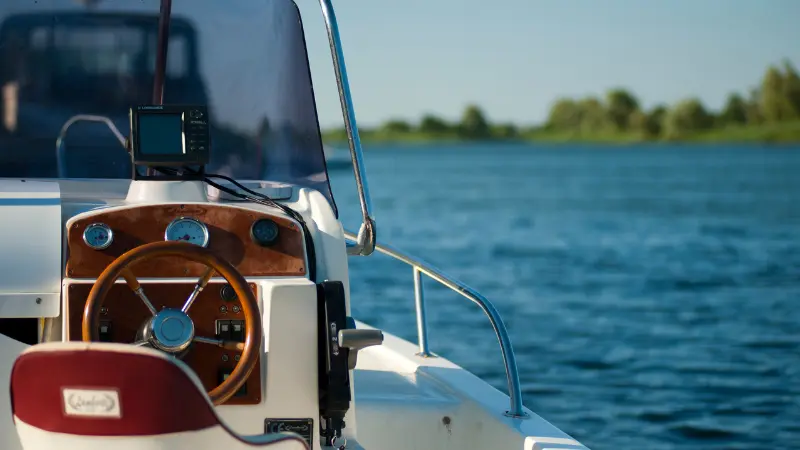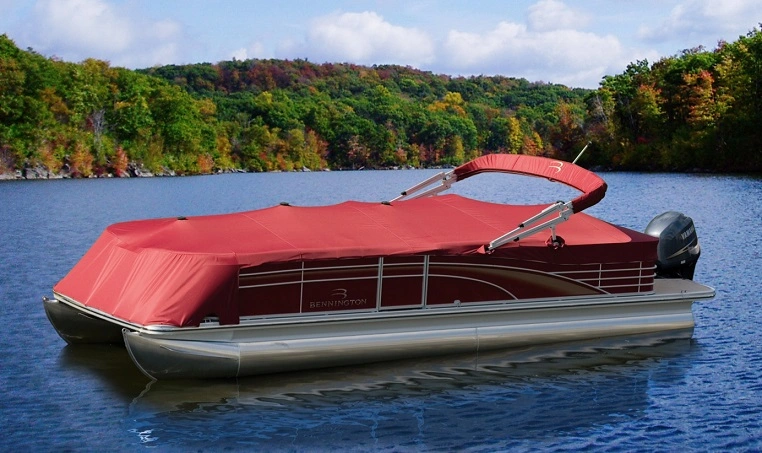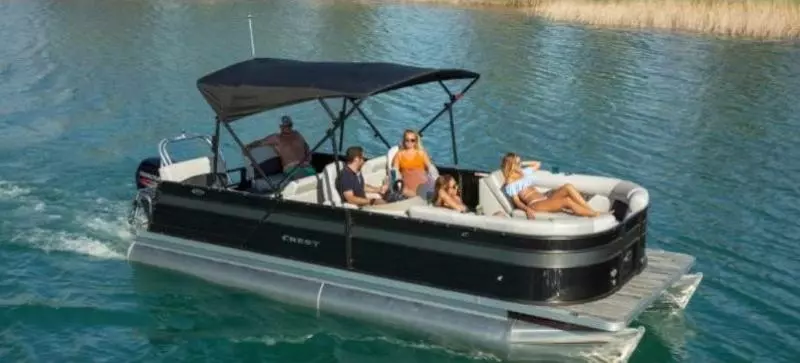What Is The Main Function Of An Engine Cut-Off Switch? Navigating the waters can be a daunting task, especially when it comes to the multitude of switches and buttons that can be found on board.
From the helm, the central hub of controls, to the myriad of labels indicating each switch’s function, the task of deciphering the purpose of each can be overwhelming, especially for a beginner.
However, it is important to familiarize oneself with the functions of each switch, as the safety of oneself and others on board depends on it.
One such switch on most recreational boats is the engine cut-off switch, commonly referred to as the kill switch. The kill switch, also known by names such as the safety lanyard, emergency cut-off switch, and others, serves a crucial purpose in ensuring the safety of all individuals on board.
Despite variations in design, the kill switch is a standard feature on most watercraft, including personal watercraft, where it often doubles as the ignition.
The importance of the kill switch cannot be overstated, and it is crucial for anyone operating a watercraft to understand its function and significance.
In this article, we shall delve into the purpose of the engine cut-off switch and why it is a vital safety feature on all boats.
Whether you are an experienced boater or just starting, understanding the primary function of the engine cut-off switch is crucial for ensuring a safe and enjoyable boating experience.
What’s A Kill Switch?
The kill switch, also known as the engine cut-off switch, is a crucial safety feature in most recreational boats. It is a simple mechanism, yet its importance cannot be overstated.
In an emergency, the kill switch serves as a vital tool to bring the boat to an immediate stop. With its primary function being to disconnect the engine from functioning, the propeller’s rotation is discontinued, ensuring the safety of everyone on board.
The kill switch is positioned near the ignition and linked to the engine cut-off switch. While it’s set for the “ON” position, the boat operates as normal, but with the switch set to the “OFF” position, the engine cannot start or run.
This makes it a crucial aspect of the boat’s operation, as the switch must be in the “on” position for the engine to function. The engine cut-off switch is designed to be triggered quickly in emergencies, and a red, coiled lanyard often represents it.
The boat operator or PWC should wear the lanyard to activate it without delay if necessary. The federal law, enacted on April 1, 2021, mandates operators of motorized recreational vessels less than 26 feet in length with a horsepower of three or more to wear the kill switch lanyard when underway.
As the operator, you are accountable for attaching the lanyard to your clothing or lifejacket so it is readily accessible in an emergency.
Why It’s Important To Wear The Engine Kill Switch Lanyard
The lanyard is a rope connecting the driver to the boat’s engine kill switch. In an accident or sudden impact, the force from being thrown out of the helm can trigger the switch, cutting off the engine’s power supply and potentially saving lives and preserving the boat from severe damage.
The United States Coast Guard (USCG) highlights this mechanism’s importance, as a standard three-blade propeller operating at a speed of 3,200 rpm can produce 160 impacts per second.
However, it is crucial that the driver is wearing the lanyard for it to be effective. Should the driver not have it on, the boat could continue to operate without control, leading to a range of dangerous scenarios, such as colliding with nearby boats or running rampant on the water.
This highlights the importance of having the kill switch lanyard readily available and used while the boat operates.
Moreover, the engine kill switch lanyard serves a dual purpose as an ignition mechanism for personal watercraft (PWCs) like WaveRunners or jet skis.
In this case, the key is typically attached to the lanyard, allowing the driver to secure it to their body. If they are thrown off, the key will be disconnected from the ignition, cutting off the engine’s power supply.
This is particularly important for PWCs, as falls from these vehicles are common, especially in choppy waters.
Using a safety lanyard is not only advisable but, in some cases, required by law based on the size of the boat.
It is vital to attach the kill switch lanyard once you take the captain’s seat and before pulling away from the dock, ensuring that the lanyard is in place before accelerating the plane.
What Is The Main Function Of An Engine Cut-Off Switch? (Things To Know About Kill Switch)
Starting from January 1, 2020, it became mandatory for manufacturers to integrate a kill switch in any motorized vessel that measures 26 feet or less and possesses more than three horsepower.
However, just because a vessel fits these criteria doesn’t mean it is automatically equipped with this safety feature. Some watercraft built before the implementation of this law may not have a kill switch.
If your vessel was manufactured before January 2020, the law doesn’t require you to install a kill switch, but if it was constructed on or after this date and did not have one, it is up to the owner to install a new switch and also maintain it.
If you’ve been around watercraft for many years, you probably have seen the implementation of kill switches in boats and personal watercraft firsthand.
Even before the law mandating their usage, manufacturers already included the switch in their vessels. While most boats will come equipped with this safety feature, it’s important to note that having a kill switch is not a guarantee for a seamless boating experience.
There are two exceptions on recreational boats; If the main steering station is located in a closed cabin, the switch is not required by law. Additionally, more than 26 feet of recreational boats are exempt from having the switch.
However, it is worth mentioning that even if your vessel is not legally required to have a kill switch, having one can significantly enhance the safety of your boating experience.
The kill switch is designed to turn off the engine in an emergency, such as a passenger falling overboard. The kill switch must be in the on position to start the engine.
It’s common for the switch to be accidentally switched off, causing the engine not to start. If this happens, we always advise checking the kill switch before assuming an engine problem.
If the lanyard is attached to your body and you’re away from the helm or the captain’s chair swivels, pulling the lanyard hard can turn off the kill switch.
It’s always wise to check the switch immediately when your boat experiences sudden shutdowns or difficulty in starting.
Kill Switch Ensures Maximum Safety
Boating is often perceived as an enjoyable and peaceful activity, but sometimes, the unexpected can occur. Safety measures such as the kill switch should be an integral part of any boating excursion to mitigate these potential dangers. This device ensures the boat remains in control, even without a captain.
Unfortunately, there have been instances where boats veered off course due to throttle malfunctions, and the captain could not engage the kill switch.
The result was disastrous, with the boat running aground and causing significant harm to the passengers and crew.
This scenario highlights the importance of wearing a safety lanyard and ensuring the kill switch is properly engaged before embarking on a boating trip.
On the other hand, there have also been situations where a properly functioning kill switch has prevented a more severe outcome.
In an emergency, the kill switch can instantly shut down the engine, stopping the propeller from spinning. This is crucial if someone falls overboard or if there are swimmers in the vicinity.
With the kill switch engaged, the boat remains afloat, preventing potential harm to those on board or in the water.
The kill switch is a vital safety feature that should not be overlooked. Whether it’s required by law or good sense, attaching the kill switch and safety lanyard before embarking on a boating trip is highly recommended.
Familiarizing yourself with the kill switch and engaging with it can mean distinguishing between a safe and enjoyable trip and a potentially dangerous outcome. Don’t take risks; always prioritize safety first.
Engine Cut-Off Switch Law: Essential Information for Boaters
The Importance of Engine Cut-Off Switches: Engine cut-off switches have the potential to save lives, making them a crucial aspect of boating safety. It’s essential to take this law seriously and abide by it.
Nationwide Requirement: Boaters are obligated to follow this new law, regardless of the type of watercraft they own. You must comply whether you have a personal watercraft or a smaller powerboat.
Who Does It Apply To: The Engine Cut-Off Switch Law applies to all boaters, regardless of their experience level or the size of their watercraft. Every boater must have an engine cut-off switch in place during planning speeds.
Advanced Safety Options: The law also recognizes the benefits of advanced safety technology and allows for electronic cut-off switches. These switches offer a more convenient and secure option for boaters who wish to enhance their safety measures.
Don’t Take Chances: Ignoring this law could result in severe consequences, so it’s imperative to familiarize yourself with the requirements and ensure you have the proper equipment on board.
Don’t take any chances when it comes to your safety and the safety of those on the water with you.
Read Also: Where Would A Boat Produce The Highest Concentration Of Carbon Monoxide?

Ever wondered how you can have a cruising boat without getting into financial problems? The answer is here. That is the reason why we set up this blog to share with you, safety tips, answers to questions that have to do with fishing and hunting. You are going to love it!
Hey! I am Armstrong!


